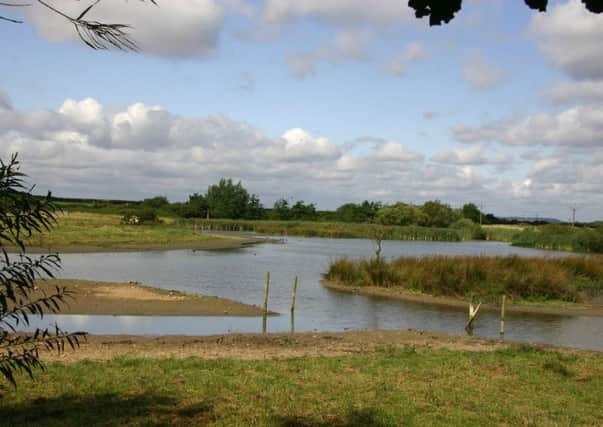Country Diary: A busy week as spring gathers pace


Swallows have returned from Africa. We saw our first two on April 20. Kittiwakes are nesting on sheer cliffs in thousands, having spent winter far out at sea.
Michael has taken brood frames to his beehives containing wax foundation, to enable worker bees draw out cells in which the queen may lay eggs.
Advertisement
Hide AdAdvertisement
Hide AdOur trip to Low Yedmandale was a treasure hunt seeking baneberry – a rare species in Britain. With recent tree-felling, we feared for its future. However, patience was rewarded and we discovered several plants prior to their blooming.
A single specimen of the false oxlip proved a bonus. It’s a hybrid between the primrose and cowslip, with deeper yellow umbles of flowers radiating from the tip of the stem.
Bird-watching and dog walking ensures you meet many lovely friendly people. Arriving at Filey Dams Nature Reserve, we met a couple from Sheffield taking a couple of days’ break. They had just been to Bempton Cliffs, and reported good sightings.
Filey must have seemed a quiet contrast. From the main hive, we noticed water levels were quite high, and we saw no waders at all. Mute swans, Canada geese, greylag geese, and mallard were in evidence, along with tufted ducks, moorhen and coot. The coot’s silky black plumage helps to show off its white bill and frontal shield, and it has glowing red eyes. The four little chicks, downy black and red faced, pestered the adult continuously for food.
Advertisement
Hide AdAdvertisement
Hide AdThe highlight was a pair of shelduck, large and rather goose-like, appearing white and black at long range. With binoculars one notices the contrasting greenish-black head and neck, white body with a broad chestnut band around the forepart, and red bill. The male’s bill is topped by a large red knob in springtime.
Walking to the East Hide we were impressed by the number of nest boxes erected in the trees. Also, since our previous visit, quite a number of tree saplings had been donated by Filey Junior School. Lovely to see children’s involvement outdoors.
The fenced board-walk, framed by willows, crossed the swamp, where flourished mares’ tails and pink/white cuckoo flowers. As the wind whipped up and ruffled the surface water, we departed.
Closely regarding a motionless brown ‘leaf’, until it began to sing, and we observed a tiny wren through binoculars that was obviously delivering a startlingly loud outburst. Its voice was a hard “chiti, chiti”, followed by a dry rattle. We took the hint and left.
The Whitby Goth Festival concluded an interesting week.